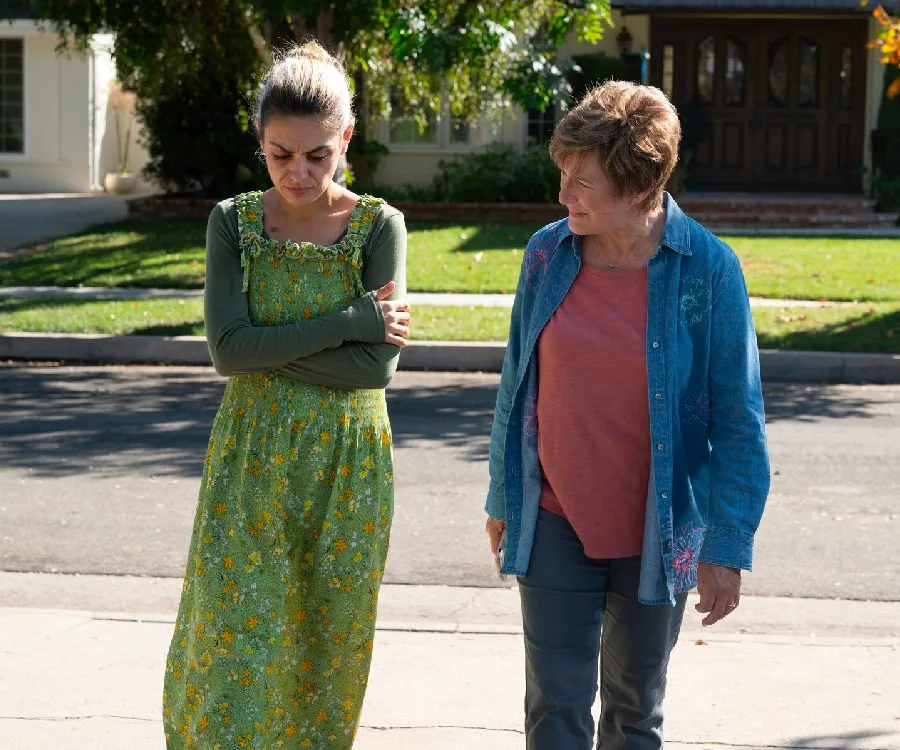In Four Good Days, Mila Kunis and Glenn Close have the difficult job of turning a harrowing and intimate portrayal of drug abuse into a compelling story that neither vilifies nor advocates for those struggling with narcotic addiction.
The crux of the film explores the mother-daughter relationship dynamic against the backdrop of America’s opioid crisis.
Content warning: this article discusses drug abuse and may be distressing to some readers.
The film, which has just dropped on Netflix and is already being devoured by audiences, sees Molly (Mila Kunis), a drug addict on her 15th attempt of sobriety, try to manage withdrawal and detox in the days leading up to a shot of naltrexone—a prescribed opioid antagonist that effectively renders opioids as useless.
With the help of her mother Deb (Glenn Close), Molly struggles to survive four good days clean, and in turn shines a light on the complex relationships between an addict, and their support systems.
Deb grapples with the guilt she feels for being an enabler to Molly—not entirely able to trust her either after years of being lied to, stolen from and shouted at to feed her daughter’s addiction.
For anyone who has loved an addict, it’s a poignant representation of the complexities of life tinted by drug misuse—which only becomes clearer after learning this movie is based on a true story.
Indeed, Four Good Days was adapted from an article published in 2016, featuring the story of Amanda Wendler and Libby Alexander.
But how close is the plot of Four Good Days to real life? Below, everything you need to know about the true story of Four Good Days.

Is Four Good Days Based On A True Story?
As previously mentioned, Four Good Days is based on a true story. The film is adapted from an article published in the Washington Post by Pultizer Prize winning journalist Eli Saslow.
The article, ‘How’s Amanda?’ A story of truth, lies and an American addiction is the complex story of heroin-addicted Amanda and her mother Libby.
Much like in the film, the article sees Amanda move back in with her mother, try—and ultimately fail—to stay clean in the prospect of receiving a shot of an opioid antagonist.
The context of the story explores the very real victims of America’s opioid epidemic.
As Saslow writes in his 2016 article, “350 people starting on heroin every day, according to estimates from the Centers for Disease Control and Prevention” with 79 people dying each day from the drug.
Amanda and Libby’s story takes place in their hometown on the outskirts of Detroit.
Libby tries to be there for Amanda as much as she can, but struggles with the guilt that comes with parenting a drug addict.
Like in How’s Amanda and Four Good Days, Amanda/Molly convinces her mother to help her find a friend and drug user named Sammy. In reality, she purchases drugs and relapses and reschedules her shot without her mother’s knowledge.
When the day of the shot arrives, Amanda/Molly begs her mother to provide a urine sample, knowing she’ll fail the compulsory drug test and unable to receive the shot of naltrexone.
As the audience sees in both the article and the film, Amanda/Molly’s lie is almost deadly as the shot sends her into withdrawl thanks to the presence of opioids in her system.
How’s Amanda ends with Libby and Amanda in the emergency room of a hospital seeking help for Amanda’s withdrawal. The question of whether Amanda stays clean or not is never resolved.
However, in Four Good Days, the film ends with Molly on the road to recovery, four months on from her withdrawal and relapse. Four good months later.
Where Is Amanda From How’s Amanda Now?
Naturally, the question on everyone’s lips after watching Four Good Days or reading How’s Amanda is just that: how is Amanda Wendler now?
In 2021, Amanda went on Fox News to attest that addicts can recover and now hopes to dispel the stigma surrounding drug addicts.
“We do recover… I’m a living testament to that,” Wendler said. “I went to more than like 20 different rehabs, but… with therapy and meetings, recovery is possible.”










